<< Previous | Displaying results 2901-2950 of 6769 for "" | Next >>
British troops land on the beaches of Normandy on D-Day, the beginning of the Allied invasion of France to establish a second front against German forces in Europe. Normandy, France, June 6, 1944.
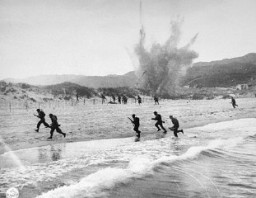
British troops land on the beaches of Normandy on D-Day, the beginning of the Allied invasion of France to establish a second front against German forces in Europe. Normandy, France, June 6, 1944.
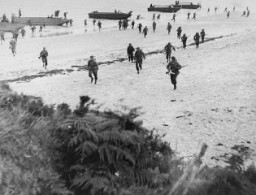
US troops wade ashore at Normandy on D-Day, the beginning of the Allied invasion of France to establish a second front against German forces in Europe. Normandy, France, June 6, 1944.
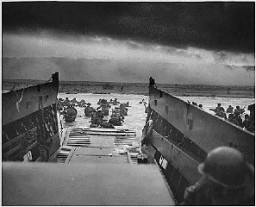
Refugees from the Sudetenland, following its annexation by Germany, arrive in Prague. Prague, Czechoslovakia, ca. October 1938.
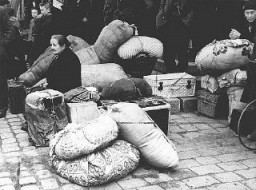
Austrian Jewish refugee children, members of one of the Children's Transports (Kindertransport), arrive at a London train station. Great Britain, February 2, 1939.
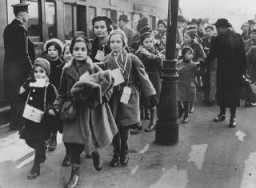
Passengers aboard the St. Louis. These refugees from Nazi Germany were forced to return to Europe after both Cuba and the United States denied them refuge. May or June 1939.
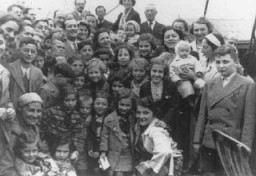
German Jewish refugees disembark in the port of Shanghai, one of the few places without visa requirements. Shanghai, China, 1940.
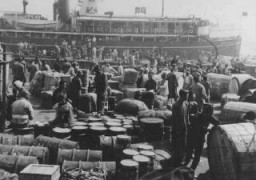
Jewish refugees board the SS Mouzinho for the voyage to the United States. Among these refugees is a group of Jewish children recently rescued from internment camps in France. Lisbon, Portugal, ca. June 10, 1941.
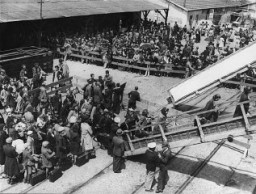
Jewish refugee boys at the Maison des Pupilles de la Nation children's home in Aspet. These children reached the home through the efforts of the Children's Aid Society (Oeuvre de Secours aux Enfants; OSE) and the American Friends Service Committee. Aspet, France, ca. 1942.
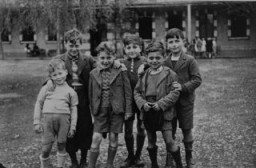
Palestine police remove the body of a refugee (draped in a Jewish flag), killed aboard the refugee ship Theodor Herzl during its unsuccessful attempt to run through a British naval blockade. Haifa port, Palestine, April 14, 1947.
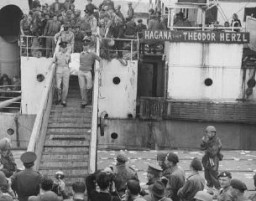
US Army staffers organizing stacks of German documents collected by war crimes investigators as evidence for the International Military Tribunal.
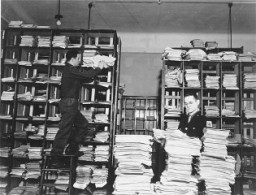
Chief US Counsel Justice Robert Jackson delivers the prosecution's opening statement at the International Military Tribunal. Nuremberg, Germany, November 21, 1945.
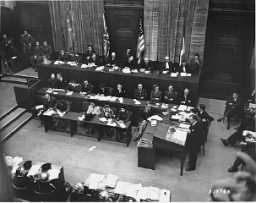
The accused and their defense attorneys in the courtroom during the International Military Tribunal. Nuremberg, Germany.
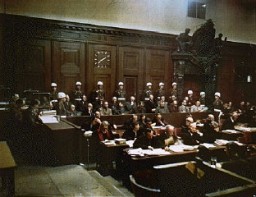
English, French, Russian, and German were official languages of the Nuremberg trials. Translators provided simultaneous translations of the proceedings. Here, they route translations through a switchboard to participants in the trial. Nuremberg, Germany, November 1945.
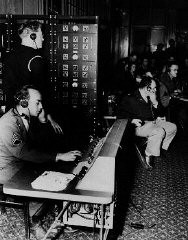
Soon after liberation, an emaciated child survivor is carried out of camp barracks by Soviet first-aid workers. Auschwitz, Poland, after January 27, 1945. This photograph is a still image from Soviet film of the liberation of Auschwitz.
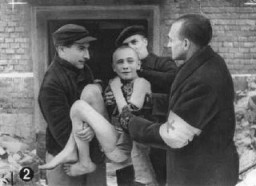
Women survivors huddled in a prisoner barracks shortly after Soviet forces liberated the Auschwitz camp. Auschwitz, Poland, 1945.
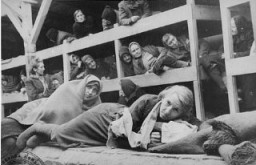
Suitcases that belonged to people deported to the Auschwitz camp. This photograph was taken after Soviet forces liberated the camp. Auschwitz, Poland, after January 1945.
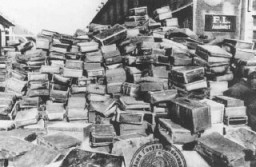
Hair of women prisoners, prepared for shipment to Germany, found at the liberation of Auschwitz. Poland, 1945.
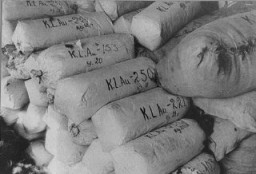
Rail cars discovered by Soviet forces and containing possessions taken from deportees. This abandoned train was on the way to Germany loaded with personal effects (in this case, pillows) taken from Auschwitz victims. Auschwitz, Poland, after January 27, 1945.
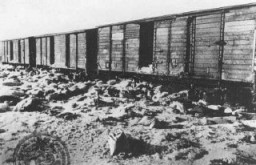
View of a section of the barbed-wire fence and barracks at Auschwitz at the time of the liberation of the camp. Auschwitz, Poland, January 1945. On January 27, 1945, the Soviet army entered Auschwitz, Birkenau, and Monowitz and liberated more than six thousand prisoners, most of whom were ill and dying.
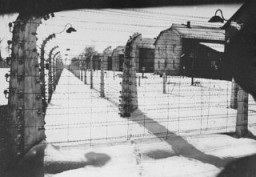
View of Auschwitz-Birkenau under a blanket of snow immediately after the liberation. Auschwitz, Poland, January 1945.
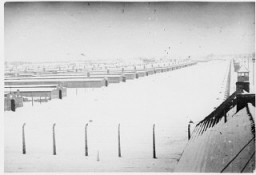
Candles mark the railway tracks leading to the Auschwitz camp during the commemoration of the 60th anniversary of the liberation of the camp. Poland, January 27, 2005.

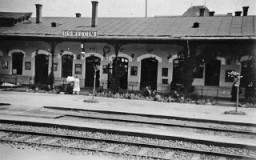
View of Majdanek camp from a nearby village. The smoke could be from the burning of corpses. Poland, October 1943.
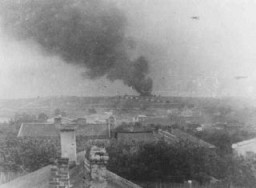
Soviet prisoners of war, survivors of the Majdanek camp, at the camp's liberation. Poland, July 1944. Second only to the Jews, Soviet prisoners of war were the largest group of victims of Nazi racial policy.
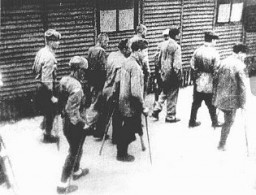
Interior of a gas chamber at the Majdanek camp. Majdanek, Poland, after July 24, 1944.
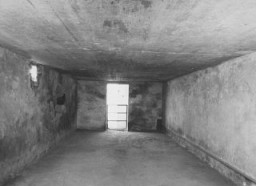
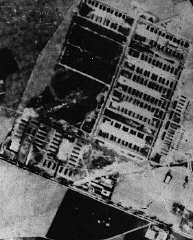
Charred remains of corpses near crematoria in the Majdanek camp, after liberation. Poland, after July 22, 1944.
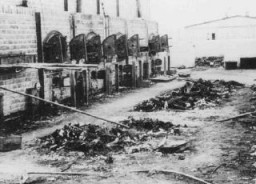
View of watchtower and fence at the Majdanek camp, after liberation. Poland, after July 22, 1944.

View of the furnaces remaining in the Majdanek camp by the time of liberation. The Germans had attempted to destroy the building as Soviet forces advanced in 1944. Majdanek, Poland, after July 22, 1944.
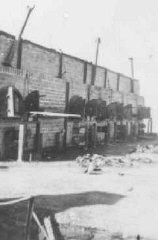
A Soviet soldier walks through a mound of victims' shoes piled outside a warehouse in Majdanek soon after the liberation. Majdanek, Poland, August 1944.
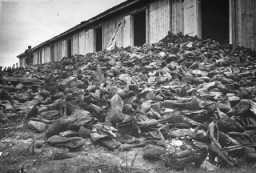
Jews are forced into boxcars for deportation to the Belzec killing center. Lublin, Poland, 1942.
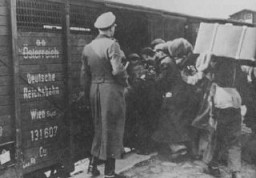
View after the obliteration of the Belzec killing center showing a railway shed where victims' belongings were stored. Belzec, Poland, 1944.
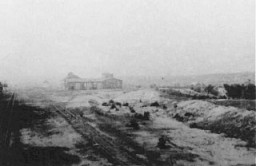
Group portrait of 12 of the participants in the October 14, 1943, uprising at the Sobibor killing center, during which prisoners killed 11 SS staff.
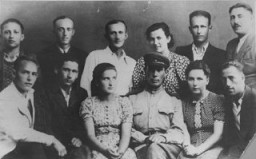
Studio portrait of Chava Leichter, murdered in the Treblinka killing center in 1942 at the age of 25. Her brother Chaim emigrated to Palestine in 1937 on the boat Polania. He served in the British army in Libya during the war. This photograph was taken in 1939.
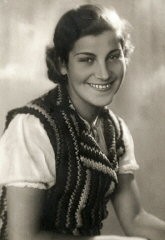
Under guard, Jewish men, women, and children board trains during deportation from Siedlce to the Treblinka killing center. Siedlce, Poland, August 1942.
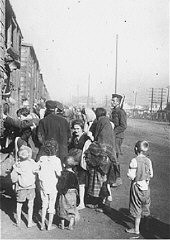
Bulgarian authorities round up Jews in occupied Macedonia for deportation. They were first held in a camp in Skopje and then deported to the Treblinka killing center in German-occupied Poland. Skopje, Yugoslavia, March 1943.
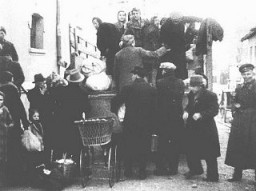
Jews from Bulgarian-occupied Macedonia who were rounded up and assembled in the Tobacco Monopoly transit camp in Skopje prepare to board deportation trains. Skopje, Yugoslavia, March 1943.
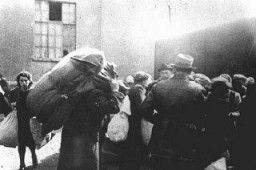
Macedonian Jews prepare to board a deportation train in Skopje. Skopje, Yugoslavia, March 1943. The Jews of Bulgarian-occupied Thrace and Macedonia were deported in March 1943. On March 11, 1943, over 7,000 Macedonian Jews from Skopje, Bitola, and Stip were rounded up and assembled at the Tobacco Monopoly in Skopje, whose several buildings had been hastily converted into a transit camp. The Macedonian Jews were kept there between eleven and eighteen days, before being deported by train in three transports…
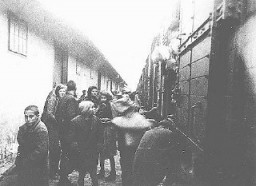
Scene during the deportation of Jews from Thrace to the Treblinka killing center. Lom, Bulgaria, March 1943.
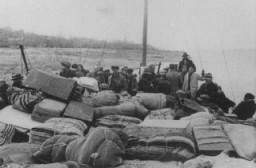
Train station near the Treblinka killing center. This photo was found in an album belonging to camp commandant Kurt Franz. Poland, 1942-1943.
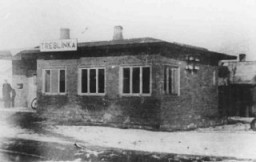
Portrait of Franz Stangl, the first official commandant of the Sobibor killing center. He is later transferred to the Treblinka killing center, where he served as commandant from September 1942–August 1943.
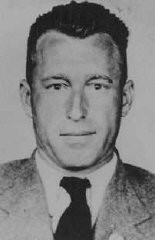
Distant view of smoke from the Treblinka killing center, set on fire by prisoners during a revolt. This scene was photographed by a railway worker. Treblinka, Poland, August 2, 1943.
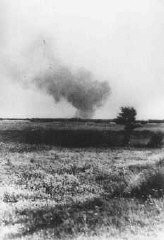
Three participants in the Treblinka uprising who escaped and survived the war. Photograph taken in Warsaw, Poland, 1945. Pictured from left to right are: Abraham Kolski, Lachman and Brenner. After participating in the Treblinka uprising, they escaped from the camp and found temporary refuge in the nearby forest. Afterwards they hid with a Christian family until liberation.
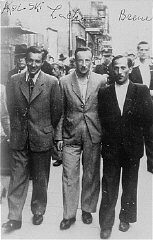
View of the village of Chelmno. To the left of the church is the Schloss, one of two sites of the Chelmno camp. The Schloss, an old country estate, served as the reception and killing center for victims until it was demolished in April 1943. Chelmno, Poland, 1939–1943.
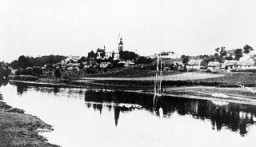
Young German soldiers assist in the deportation of Jews from the Zychlin ghetto to the Chelmno killing center. The Nazis planned this deportation to fall on the Jewish holiday of Purim. Poland, March 3, 1942.
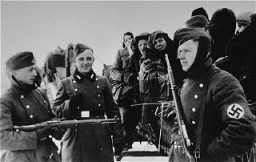
View of the manor house in Chelmno that became the site of the Chelmno killing center. Chelmno, Poland, 1939.
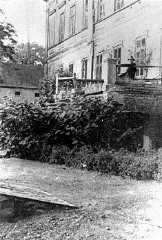
SS personnel stand guard while Lodz ghetto police board Jews onto a deportation train bound for Chelmno or Auschwitz. Lodz, Poland, between May and August 1944.
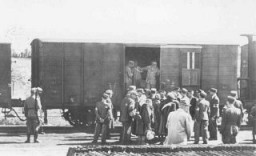
Site at which the SS shot and burned the last 45 of 48 prisoners at Chelmno. The other three prisoners escaped. Chelmno, Poland, 1945.
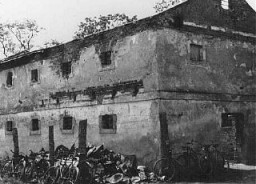
Postwar photograph of a building in Dabie where the possessions of Jews killed at the nearby Chelmno killing center were stored. Dabie, Poland, June 1945.
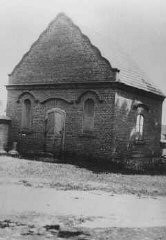
We would like to thank Crown Family Philanthropies, Abe and Ida Cooper Foundation, the Claims Conference, EVZ, and BMF for supporting the ongoing work to create content and resources for the Holocaust Encyclopedia. View the list of donor acknowledgement.